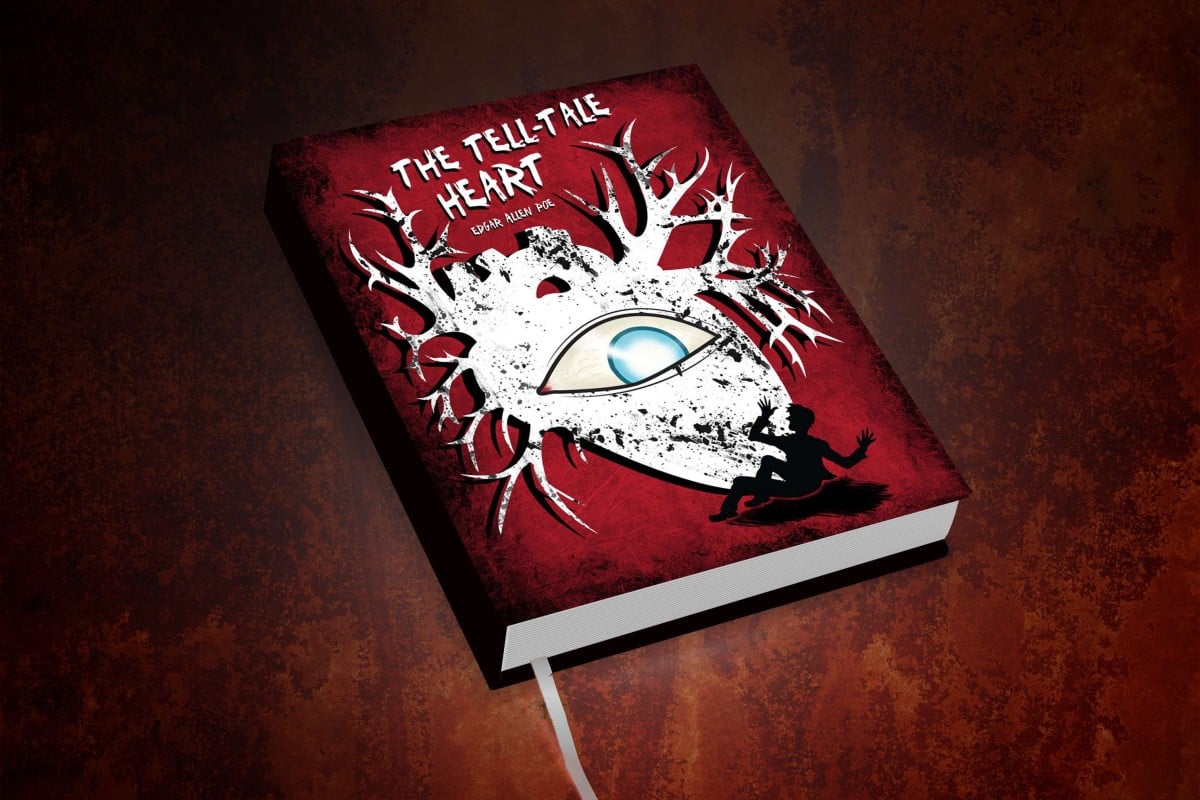
Golden 10: ‘Logic’ leads to murder in The Tell-Tale Heart by mystery master Edgar Allen Poe
Young Post has come up with a list of great books you should read before you head off to university. This week, it’s Edgar Allen Poe’s eerie tale, The Tell-Tale Heart

What’s it about?
In The Tell -Tale Heart, we follow an unnamed narrator through a murder plot. We’re not sure of the narrator’s gender, which Edgar Allen Poe likely intended. For today, let’s assume the narrator is a woman.
The first thing the narrator tells us is that she is “dreadfully nervous” and begins a long defence against any accusations that she is insane. She tells us that she planned to murder an old man that she cares for, but that her actions are logical and methodical – and therefore not insane.
We don’t know whether she is related to the old man, or employed by him. She claims that she “loved the old man”, but came to loathe his “pale blue eye, with a film over it”.
For seven nights, the narrator enters the old man’s room at midnight to watch him sleep and shine a lantern on his “vulture eye”. On the eighth night, the old man wakes up, and – when she sees his eye – she is “furious”. She quickly kills him. Still adamant that she is not insane, she explains how she cut up the old man’s body and hid it beneath the floorboards.
A neighbour hears the old man scream and reports the murder to the police, who come knocking at the door. For a moment, the narrator feels she has convinced the officers that the scream was her own and there was no foul play.
After a while, though, she hears ringing in her ears and feels ill. She begins to hear a beating sound and – thinking that it is the beating of the old man’s heart – worries that the police will also hear it and become suspicious of her. As the imagined sound gets louder and louder, the narrator feels compelled to confess her guilt.
Why should you read it before you go to university?
As you head to university to pursue degrees that revolve around analysis or creativity, you may want to consider what The Tell-Tale Heart shows us about the concepts of rationality and intuition.
The story puts the mind and the heart at opposite ends, as it often is in real life. Should we act on logic, or follow our hearts?
Having no empathy for the old man, the narrator’s logic leads her to kill him. But she cannot escape her heart – her conscience – which haunts her and urges her to seek redemption by confessing to the police.
You should also think about what the story says about reality – or our conception of it. Is reality formed from a series of logical conclusions, or is it a collection of feelings and beliefs? This dilemma has challenged thinkers for centuries. Perhaps, like the Romantics, you feel that it’s most important to maintain your spiritual beliefs and express your emotions creatively. Or, like the philosophers and scientists of the Enlightenment, who worshipped the human mind, you may think it’s more important to understand the world by studying data and evidence.
What’s so great about it?
The Tell-Tale Heart is a classic work of Gothic fiction, which emphasises the characters’ psychological perspective and their experience of the supernatural. Gothic fiction often features tales of horror, and takes place in remote or unfamiliar places. In short, it’s really creepy.
The narrator in The Tell-Tale Heart acts on her fear of the old man’s
eye. She compares the eye to a “vulture” three times. She believes that it poses a threat to her and awaits her demise – as a vulture does. This may be why her “blood ran cold” whenever the old man looked at her. The narrator is so afraid of the eye that she feels she has no choice but to kill the old man and rid herself of the horror. Ironically, the old man’s death only makes her anxiety and paranoia worse. We see that, ultimately, the real horror lies in her actions towards the old man.
Emphasising the narrator’s madness, the story makes reference to Shakespeare’s Macbeth, in which Lady Macbeth obsesses over a spot of blood on her hands.
The spot of blood is a symbol of Lady Macbeth’s obsession and guilt, which she cannot wash away. In The Tell-Tale Heart, the “the damned spot”, and the sound of the beating heart that ends the story, reveal the narrator’s obsession with the old man.
We aren’t sure whether the sound is the beating of the narrator’s own heart, or a figment of her imagination. The beating heart could also represent her conscience, which would reveal a final pang of guilt and empathy for the old man.
Apart from being a short and easy read, The Tell-Tale Heart is also a great audiobook, as is The Black Cat, another of Poe’s short stories. There are also many cinematic interpretations of The Tell-Tale Heart available online.
If you liked The Tell-Tale Heart this, you might also want to try …
Frankenstein by Mary Shelley
Dracula by Bram Stoker
Interview with the Vampire by Anne Rice